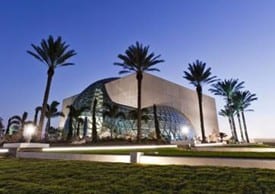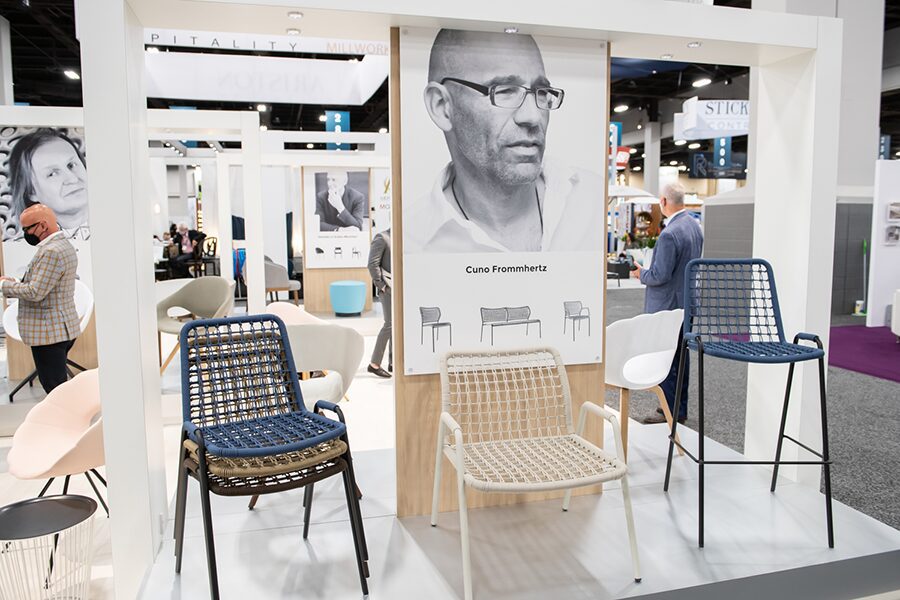 Designed by HOK, the new Salvador Dalí Museum has opened its doors in St. Petersburg on a scenic waterfront site. Architect Yann Weymouth led the design team, which crafted the 75-foot-tall building adorned by 1,062 unique triangular glass panels. It is inspired both by Dalí’s surrealist art and by the practical need to shelter the collection from the hurricanes that threaten Florida’s west coast.
Designed by HOK, the new Salvador Dalí Museum has opened its doors in St. Petersburg on a scenic waterfront site. Architect Yann Weymouth led the design team, which crafted the 75-foot-tall building adorned by 1,062 unique triangular glass panels. It is inspired both by Dalí’s surrealist art and by the practical need to shelter the collection from the hurricanes that threaten Florida’s west coast.
“Salvador Dalí was a monumental pioneer of 20th century art and this is perhaps the best collection of his work in the world,” says Weymouth. “Our challenge was to discover how to resolve the technical requirements of the museum and site in a way that expresses the dynamism of the great art movement that he led. It is important that the building speak to the surreal without being trite.”
A 58-foot-high, right-angled Euclidean “treasure box” with thick concrete walls protects the art. This unfinished concrete box is disrupted by a flowing, organic triangulated glass “Enigma” (also the name of a 1929 Dalí painting) that opens the museum to the bay and sky while forming an atrium roof that draws in natural daylight.
“We deliberately exposed the unfinished faces of the concrete to reduce maintenance and to allow it to be a tough, natural foil to the more refined precision of the glass Enigma,” says Weymouth. “This contrast between the rational world of the conscious and the more intuitive, surprising natural world is a constant theme in Dalí’s work.”
He adds: “The flowing, free-form use of geodesic triangulation is a recent innovation enabled by modern computer analysis and digitally controlled fabrication that allows each component to be unique. No glass panel, structural node, or strut is precisely the same. This permitted us to create a family of shapes that, while structurally robust, more closely resembles the flow of liquids in nature.”
A soaring, poured-in-place concrete spiral staircase energizes the 75-foot-high glass atrium and invites visitors to proceed from the ground-level entrance up to the third-floor galleries. The raw concrete spiral flows at its base into the visitor reception desk, with light cable-stayed stainless steel guardrails floating in delicate juxtaposition. The helical stairway design is an allusion to Dalí’s fascination with spiral forms in nature and the double helix of DNA.
In the exhibition galleries on the third floor, seven unique suspended black plaster “light cannons” funnel daylight onto the largest of the Dalímasterworks. The art exhibition spaces are connected by a sculptural gallery that appears to magically land in the center of the “egg” skylight, providing ample light and sweeping vistas overlooking Tampa Bay.
Several sustainable design strategies create energy, water, and cost savings. The building is sited to reduce solar load from the low-angled western sun. Two types of solar collectors on the roof heat water for the restrooms and assist in the dehumidification cycle of the air conditioning system. Automated controls turn lights off automatically when rooms are not in use. Water is conserved with low-flow fixtures, and all water condensate is recycled back into the system. The building envelope is compact, well-insulated and, with its concrete thermal mass, acts as a heat sink to reduce the temperature highs and lows of a typical day.


